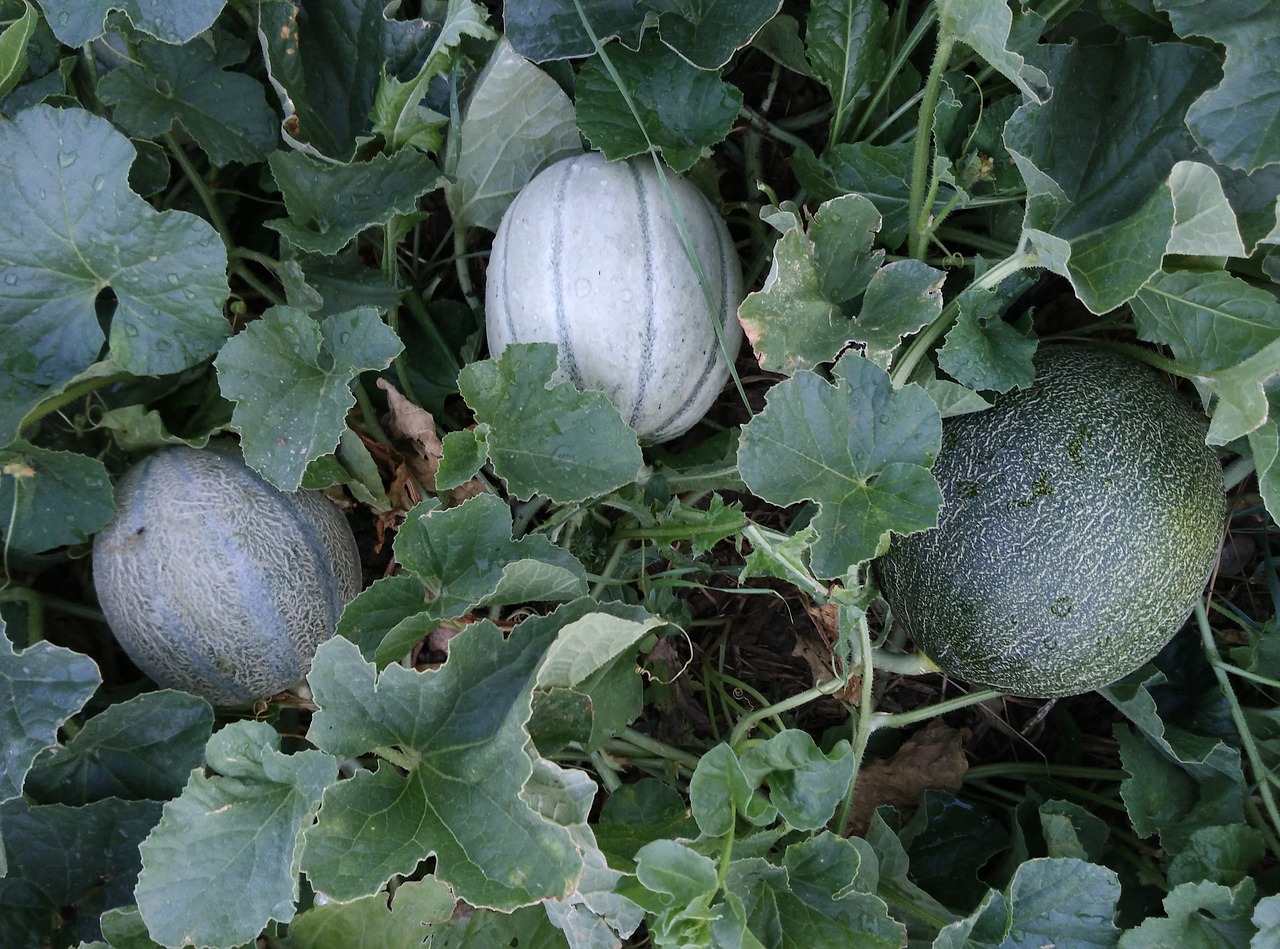Cantaloupe Growing Stages. Cantaloupes (Cucumis melo) grow from seed and go into several stages of growth until their fruits are ready to harvest. The small seeds will sprout, grow, and eventually produce cantaloupes. But how this plant grows?
Cantaloupe Growing Stages
Stage 1. Seed
The cantaloupe seeds’ characteristics are small, flat, have pointed tips on one edge and rounded on the other edge, and brown in color. The cantaloupe growing process begins when the seeds are planted in the soil in early spring.
The plants need to be started indoors and transplanted outside after they have several true leaves, which will help protect them from cold weather and dry soil.
While it’s important to keep the plants warm and well-watered during this process, you should also avoid watering too much because it can affect its growth.
Stage 2. Seedling Stage
The seedlings should be transplanted outside after they have several true leaves. Transplanting is best done when the soil is warm, but not too dry. Transplanting can be done with a shovel or trowel and should be done in the late afternoon or evening.
Water the transplanted cantaloupe seedlings to make them grow well. The seedlings will grow longer and bigger after a few weeks.
Stage 3. Vine Growth
The cantaloupe vines will continue to grow until they reach 8 to 10 feet (2 to 3 meters) in length. During this stage, the cantaloupe plants grow more roots, leaves, and thicker and longer vines. Plants need more water, sunlight, and nutrients to make them grow better and prepared them to grow flowers and fruits sooner.
You’ll also want to stake your cantaloupe plants as soon as you set them out in the garden because although they’re hardy plants and can withstand drought conditions quite well, they still need some support while they get established in their new environment—especially if there are strong winds or heavy rains blowing through your area!
Cantaloupes that are just growing in the ground are just fine, but growing cantaloupes on a trellis are also great to make the fruits clean and free from pests that may attack.
Stage 4. Flowering
Female flowers produce fruit and are identified by a small swelling at the base of the flower. Male flowers are smaller and have no swelling.
The flowers of cantaloupe can be pollinated by the pollinators like bees, but hand pollination can also be done with a small artist’s paintbrush.
If you have only one plant, hand pollination is the best way to get melons. A small, dry paintbrush can be used to brush pollen from the male flower onto another female flower. Be sure to brush every day for about a week so that all of your plants will produce fruit.
Usually, there are more female flowers than males so the plant can only produce a few cantaloupes. When flowers are not pollinated they will fall.
Stage 5. Fruiting
Cantaloupes mature in approximately 75 days from planting, depending on the variety and your climate. Cantaloupes are warm-weather crops and require full sun to grow. If you live in a cool climate and want to keep your plants growing throughout the year, you can do this by using a greenhouse or covering them with plastic film.
In order for the plants to grow cantaloupes, flowers must be pollinated. When many flowers are pollinated, more fruits will grow on the plant. But usually, fruit thinning is done on this plant so that the fruits will grow bigger.
When a lot of cantaloupes are growing on the plant, the energy, water, and nutrients will be divided into those fruits which makes them small that is why some small fruits are being removed from the plant so the energy will be focused on those already growing cantaloupes.
Variety and planting date
Each variety has its own recommended planting date. You’ll find this information on the seed packet or online under a plant’s description. You will be eating ripe cantaloupes from your garden very soon!
Those cantaloupes will grow seeds inside and can be used again to grow new cantaloupe plants.
Conclusion: Cantaloupe Growing Stages
The growing process begins when the seeds are planted in the soil in early spring. The seedlings should be transplanted outside after they have several true leaves.
The transplants should be placed at least 2 to 3 feet apart and given plenty of water and fertilizer each week. Once temperatures stay above 75 degrees Fahrenheit, plants should be trellised or staked to keep them off the ground, so they can receive more sunlight and grow up straight.
As you can see, the cantaloupe growing process is quite simple. It should take about 75 days from planting to harvest time, but you can speed up the process by using a trellis for the vines and hand-pollinating flowers.

